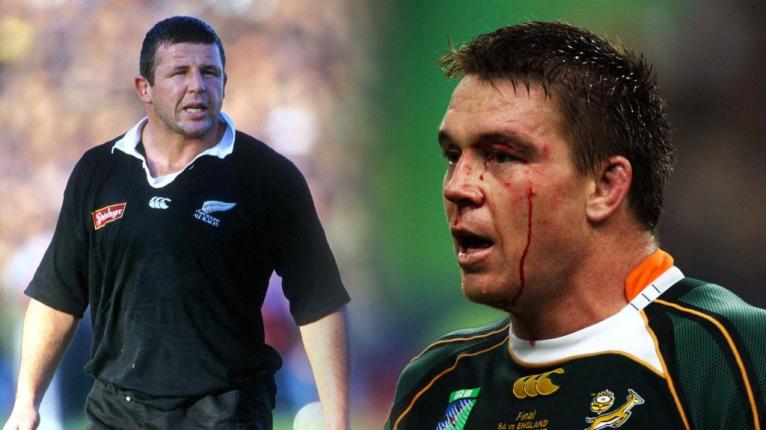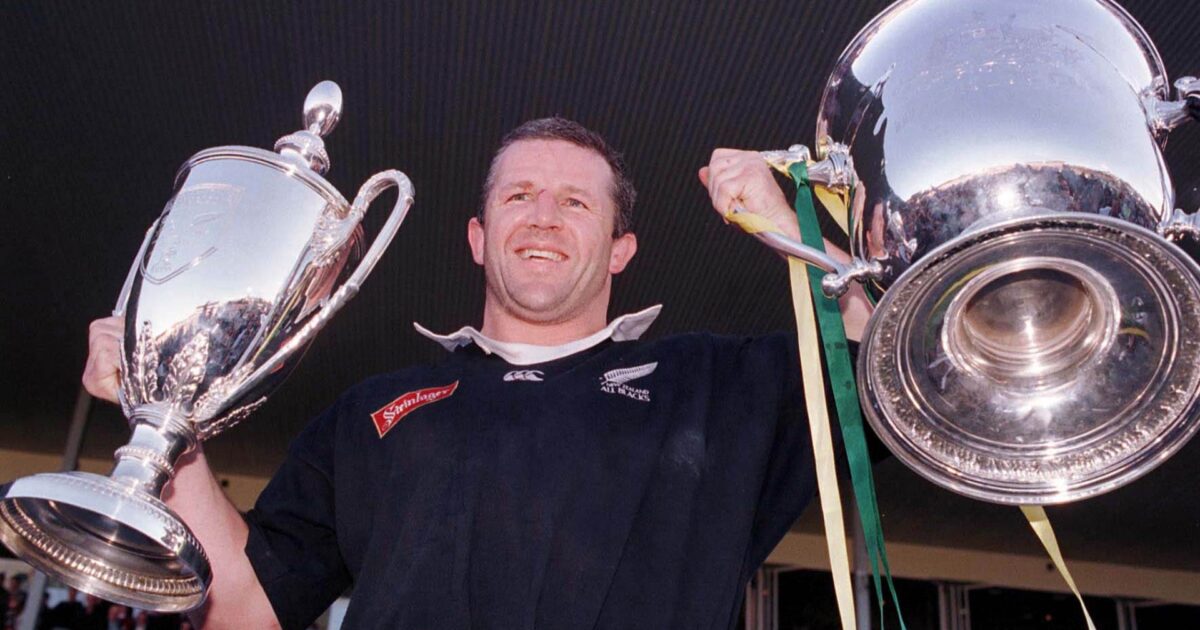Hooker - Position Guide

Alongside the two props, the hooker makes up the front row of the scrum. They’re powerful players who have a lot of responsibilities at set pieces and in open play.
In this guide, we’ll take an in-depth look at the role a hooker plays during the game. In doing so, we’ll pay close attention to their responsibilities during set pieces.
We’ll also take a detailed look at the basics of the position, the physical attributes of a hooker in rugby and some of the best players to ever play the position. Then we’ll conclude by answering some popular reader questions about rugby hookers.
What is a hooker in rugby?
The hooker is one of the eight forwards in a rugby union team. They’re also a member of the front row, alongside the loosehead prop and the tighthead prop.
Only specialist front row players can play hooker in rugby; if a team cannot field one for any reason, the scrums become uncontested.
Hookers play a vital role during set pieces and they’re the main decision maker of the forwards. They’re responsible for coordinating the timing of the scrum, gaining possession in the scrum and throwing the ball into play at the lineout.
In open play, a hooker in rugby acts like the props. This means they’re responsible for securing possession of the ball in rucks and mauls. They also receive short ‘crash’ passes where they put pressure on the opposition’s defence.
Other names for a hooker
In rugby union, the names of the player positions have changed over time. For example, in the early days of the sport, people were only ever really known as forwards or tends, who got their name from goaltenders (people who were tends are now called backs).
In the modern game, people from different parts of the world sometimes refer to certain positions differently. For example, the fly-half is sometimes also known as the outside half, standoff or outhalf.
Similarly, in New Zealand, the scrum-half is still referred to as the half-back, the fly-half is referred to as the first five-eighth, the inside centre is called the second five-eighth and the outside centre is simply known as the centre.
Thankfully, with the hooker, we can avoid this confusion. This is because rugby fans from all over the world use the term hooker.
What number is a hooker in rugby?
In a rugby union match, all the players on a team are numbered from 1 to 15.
As they’re a member of the team’s front row, the hooker wears number 2. They’re placed right at the front of the team’s scrum, between the loosehead prop (1) and the tighthead prop (3).
What is the average size of a hooker in rugby?
Rugby hookers come in many different shapes and sizes. However, generally speaking, hookers at the elite level look like a smaller version of a prop. They’re usually powerfully built and quite tall. On top of this, it’s also advantageous for a hooker to be muscular and have a short but powerful neck. This then helps them in the scrum.
Generally speaking, rugby hookers are around 1.8m (5’11ft) tall. Due to the fact they’re usually slightly shorter than the props (who are often 6ft and above), the hooker in rugby can act like a pendulum and swing their legs forward in the scrum while still hanging on the shoulders of the two props.
Due to the versatility involved in playing at hooker in rugby union, people in the position usually weigh less than the average prop does. At the elite level, the average hooker usually weighs 105-110kg (232-243lbs). This is because hookers need to move around the field much more than props do. After all, hookers in the modern game need to have good ball-handling skills, a bit of speed and be effective in a ruck. All of these skills require a slight reduction in weight.
What does a hooker do in rugby?
The exact role of the hooker in a rugby union team depends on the ability of the player and the type of game the coach wants to play. However, generally speaking, a rugby hooker is mainly involved in set pieces. On top of this, they’re responsible for working in close contact situations, such as scrums, rucks, mauls and lineouts.
As well as their ball-carrying duties, the hooker is judged on their lineout ability and their ability to win the ball at the scrum. With this in mind, let’s look at those important functions in closer detail.
What is the hooker’s role in scrums?
The hooker plays a vital role in the scrum, where they’re supported by the two props on the front row. In fact, this part of the game is where the name ‘hooker’ comes from. They’re used to ‘hook’ the ball backwards when it enters the scrum.
In the scrum, the opposing front rows create a tunnel into which the scrum half rolls the ball. The hooker in each team will then aim to immediately strike the ball and move it backwards. From here, the ball travels through the scrum and emerges at the back.
The hooker is also responsible for coordinating the timing of when the ball is put into the scrum. Due to this, they must also be a good communicator. On top of this, they’re also responsible for forming and maintaining a tight bond with the two props.
What is the hooker’s role in lineouts?
At the lineout, the rugby hooker on the attacking team is responsible for throwing the ball into play. Meanwhile, the hooker on the defensive team defends the space between the touchline and the front of the lineout.
The hooker must throw the ball along an imaginary line between the two teams. This means that they cannot simply throw the ball straight to their own team. However, because lineouts are rehearsed and practised regularly, the team in possession has a slight advantage because they know where the ball will go. That said, the hooker still has to execute the throw perfectly.
After the lineout has been completed, a hooker in rugby may be asked to fulfil a number of roles. For example, they may be required to:
- Join a ruck where a player was tackled
- Join a maul that was formed by the jumper (this can be an effective way of scoring tries)
- Chase a kick after a maul or ruck has collapsed
What is a hooker’s role in open play?
Hookers in rugby union matches are forwards. As a result, they need to be highly competitive and take pride in being tough. Much like the props, they need to carry the ball towards the opposing goal-line, often against fierce tackling.
On top of this, they also need to cooperate with other forwards and get involved in mauls and rucks. By being highly competitive and aggressive, they can wear down and break down opposition defences during the game.
Generally speaking, most hookers in rugby union matches take pride in their defensive skills. These skills allow them to use their strength and endurance to repel opposition forwards.
Notable rugby hookers

Across the history of rugby union, some of the game’s best players have featured at the hooker position. In the RugbyPass Hall of Fame vote, rugby fans from around the world suggested that Sean Fitzpatrick was the best hooker in rugby history. A former captain of the All Blacks, he played almost 100 games for his country and won the inaugural Rugby World Cup. Other hookers who have been sensational in the role include Bismarck Du Plessis, Keith Wood and Keven Mealamu.
Today, Dane Coles is regarded as the best hooker in the world. But, he’s rivalled by other legends of the game, such as Agustín Creevy and Jamie George.
FAQs
To help you learn even more about the role of the hooker in rugby and the things you need to know about how the position works, we’ve answered a number of popular reader questions.
How many hookers are in a scrum?
There are two hookers in every rugby scrum (one for each team). They both line up in the middle of the front row for their team and they directly compete for possession of the rugby ball when it’s thrown into the scrum.
What gym exercises do rugby hookers complete?
Hookers often contest for the ball at the breakdown. Due to this, they need to be incredibly strong in their posterior chain.
The hamstrings, glutes and lower back work to stabilise a rugby hooker when they’re contesting the ball. As a result, hookers usually work on strengthening these muscles so they can stay on their feet for longer.
At the elite level, most rugby hookers can complete a back squat of at least 180kg. Of course, there’s no need for you to squat this much when you’re playing local rugby, but this gives you a really good indication of how dedicated and strong world-class hookers are.
Other exercises that can help you with the posterior chain include:
- Deadlifts
- Front squats
- Lunges
- Barbell rows
But, in addition to hitting the gym, rugby hookers should also continually work on their lineout throws. When practising this skill, you should aim to keep the ball in a tight spiral and keep your eyes on the intended target. For this drill, many hookers use a swimming pool stick that has a net attachment.
Try to hit the net attachment as many times as you can in 50 attempts. Following this, work relentlessly on beating your initial score. This is a great drill because it can be done alone and it’s really easy to track your progress.
What can I do to improve my scrummaging technique?
When your team has the put-in, your job is to get the ball to the back of the scrum in a controlled fashion. The best way of doing this is to do drills with the front five people in your scrum. This way, you can work on your synchronisation and ensure that the opposition’s hooker is always under pressure and cannot easily disrupt you.
On the other hand, when the opposition has the ball, it’s your turn to be the disruptor. Of course, you won’t always be able to hook the ball backwards. However, if you can kick the ball forwards as hard as you possibly can, then you’ll disrupt the opposition’s scrum. You’ll also make it incredibly difficult for the opposing number eight to not fumble the ball as it pops out of the back.
To maximise your effectiveness in the scrum, you need to make sure you’re in position to strike the ball. To do this, you should aim at the opposition hooker’s right side (which is known as ‘the cup’). This is where the shoulders of the opposition tighthead prop and hooker meet.
From here, make sure you have your eyes open at impact. This is the key to connecting with the ball effectively and avoiding injury. Finally, try to scrunch your neck into your shoulders just before impact. This will stop your head moving around and will square your shoulders.






















